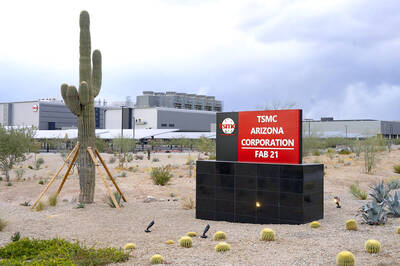What’s a natural resource that is free, produces zero carbon emissions and has been used to power ships since time immemorial?
The answer is of course the wind. The graceful sailing ships that sent the likes of Christopher Columbus and Vasco da Gama to the Americas and India are long gone, though, replaced by vast iron vessels loaded with crude oil, minerals and neat stacks of shipping containers to feed the voracious global economy.
These massive vessels, which can reach as long as three soccer fields put together, consume fuel oil that pumps out tonnes of planet-warming gases such carbon dioxide and nitrous oxide as well as other pollutants that cause acid rain.
Shipping is responsible for ferrying over 90 percent of global trade and produces about 3 percent of mankind’s carbon emissions, or more than the CO² produced by the German economy.
Yet reducing these emissions means tackling idiosyncratic maritime laws, the vested interests of countries such as China that rely on shipping to fuel rapid economic growth, and convincing conservative ship owners to embrace green technology.
Ironically, one of the most promising technologies to reduce ship fuel consumption is the same one used thousands of years ago when ancient mariners first ventured across seas on rickety boats — sails.
German entrepreneur Stephan Wrage is among those re-inventing the sail and his 21st century version is very different from the sails that graced the masts of Columbus’ Santa Maria.
As a teenager, Wrage figured he could speed up his sailing boat if he attached a sports kite overhead. Two decades later, he has translated that idea into a kite system for large vessels such as bulk carriers.
“Wind is unbeatable because it’s free and you don’t need to transport it with you so you just use it as you need,” said Wrage, whose company SkySails GmbH & Co KG makes giant kites that look similar to paraglider canopies for ships.
Kites propel ships faster than traditional sails, Wrage said, because they are dynamic, not fixed, and can move around to capture winds coming from different directions.
The system, he said, can save between 10 percent to 30 percent of fuel on a single voyage, a significant cost saving given that 60 percent to 80 percent of a vessel’s operation costs derive from fuel.
FREE AS THE WIND
Convincing shipping companies to buy costly green technologies, however, is easier said than done as the industry recovers from the economic slowdown and faces volatile fuel prices that make it difficult to calculate returns on investment.
A carbon emissions scheme, in which ships would be penalized for inefficient fuel use and rewarded for conserving fuel, would spur green investments in a conservative industry that has been slow to embrace new technologies.
“The most important business driver would be if there was a carbon emissions scheme in place,” said Wrage.
“The most important thing is that we get a price on carbon so the industry has security and knows what is coming and knows where to invest,” he added.
However, developing a carbon scheme for shipping is politically charged and highly complex as the vast majority of vessels sail under flags of convenience of other countries to avoid tighter regulations and higher taxes and labor costs.
Ships from countries such as Denmark, Britain and Germany are largely registered in developing countries such as Panama, Liberia and even land-locked Mongolia that, under the UN’s Kyoto Protocol, have no duty to cut carbon emissions.
“If the whole shipping industry was viewed as a country, it would be the sixth or seventh biggest emitter of greenhouse gases,” said Philip Roche, a maritime and trade lawyer at British firm Norton Rose.
Those emissions are set to keep rising as world trade grows. The International Maritime Organization (IMO) has estimated that greenhouse gas emissions from shipping could grow between 150 percent and 250 percent by 2050.
“So we’re talking about a lot of emissions but at the moment the emissions don’t belong to anybody at all,” Roche said.
Under the Kyoto Protocol, only about 40 industrialized nations have to meet emissions targets between the climate pact’s 2008 to 2012 first commitment period.
Developing countries are exempted from mandatory targets under provisions that recognize rich nations are responsible for most of mankind’s greenhouse gas pollution emitted since the Industrial Revolution of the 18th century.
Poorer nations are meant to take voluntary steps under the guideline of common but differentiated responsibilities to take into their account the need to keep their economies growing to lift millions out of poverty.
But this guideline is now widely seen as out of date given the pace of emissions growth. China has overtaken the US as the world’s top greenhouse gas polluter and India is the fourth largest, with its emissions growing rapidly to nearly two billion tonnes by 2007, or just below Russia’s.
Developing nations balk at agreeing to mandatory targets as part of a broader climate pact and at last December’s climate talks in Copenhagen would only agree to add a list of voluntary steps as part of the Copenhagen Accord.
CARBON CONUNDRUM
The split over responsibility for emissions has proved just as divisive in the International Maritime Organization.
The UN body responsible for shipping usually deals with technical issues to reduce pollution and improve safety. For example, world nations have agreed to steps to progressively cut the sulfur content of shipping fuels and the nitrous oxide emissions from engines.
But mandating cuts to CO² emissions is another matter.
Due to the difficulties of obtaining a global maritime agreement that may end in failure if China and others fail to compromise, Roche believes regional schemes may be set up first.
The EU would likely take the lead followed by other regional blocs until a patchwork quilt of schemes are formed. Over time, they may eventually merge into one scheme to reduce CO² emissions from shipping.
However, this would be a painful route for the industry as ship owners and others would have to deal with multiple schemes rather than one global scheme administered by the IMO.
“I think it’s unrealistic of the global community to expect the IMO to reach a global agreement on emissions ... when, at a wider level, the international community cannot agree a way forward, as illustrated at Copenhagen,” said Roche.
Then there’s the gnarly question of who do the emissions belong to? The country under whose flag the ship sails, the true country of origin, or the countries with which the ship trades?
“Do we attribute emissions to the flag state or do we attribute them to the shipping industry as a whole?” asked Roche.
And if emissions are attributed to the country where the ship is flagged then what would happen with ships flagged in developing countries that, under the Kyoto Protocol, are exempt from making carbon emissions cuts following the “common but differentiated responsibility” principle.
This runs completely counter to the cornerstone IMO principle of “no more favorable treatment” for any ship or any flag.
“If global regulations required that all ships flagged, say, in Germany and the UK must comply with emissions targets ... but ships flagged in developing countries do not have to comply, then in a New York minute all these ships will transfer their flags to those countries that don’t have to comply,” Roche said.

On the final approach to Lanshan Workstation (嵐山工作站), logging trains crossed one last gully over a dramatic double bridge, taking the left line to enter the locomotive shed or the right line to continue straight through, heading deeper into the Central Mountains. Today, hikers have to scramble down a steep slope into this gully and pass underneath the rails, still hanging eerily in the air even after the bridge’s supports collapsed long ago. It is the final — but not the most dangerous — challenge of a tough two-day hike in. Back when logging was still underway, it was a quick,

From censoring “poisonous books” to banning “poisonous languages,” the Chinese Nationalist Party (KMT) tried hard to stamp out anything that might conflict with its agenda during its almost 40 years of martial law. To mark 228 Peace Memorial Day, which commemorates the anti-government uprising in 1947, which was violently suppressed, I visited two exhibitions detailing censorship in Taiwan: “Silenced Pages” (禁書時代) at the National 228 Memorial Museum and “Mandarin Monopoly?!” (請說國語) at the National Human Rights Museum. In both cases, the authorities framed their targets as “evils that would threaten social mores, national stability and their anti-communist cause, justifying their actions

In the run-up to World War II, Admiral Wilhelm Canaris, head of Abwehr, Nazi Germany’s military intelligence service, began to fear that Hitler would launch a war Germany could not win. Deeply disappointed by the sell-out of the Munich Agreement in 1938, Canaris conducted several clandestine operations that were aimed at getting the UK to wake up, invest in defense and actively support the nations Hitler planned to invade. For example, the “Dutch war scare” of January 1939 saw fake intelligence leaked to the British that suggested that Germany was planning to invade the Netherlands in February and acquire airfields

Taiwanese chip-making giant Taiwan Semiconductor Manufacturing Co (TSMC) plans to invest a whopping US$100 billion in the US, after US President Donald Trump threatened to slap tariffs on overseas-made chips. TSMC is the world’s biggest maker of the critical technology that has become the lifeblood of the global economy. This week’s announcement takes the total amount TSMC has pledged to invest in the US to US$165 billion, which the company says is the “largest single foreign direct investment in US history.” It follows Trump’s accusations that Taiwan stole the US chip industry and his threats to impose tariffs of up to 100 percent